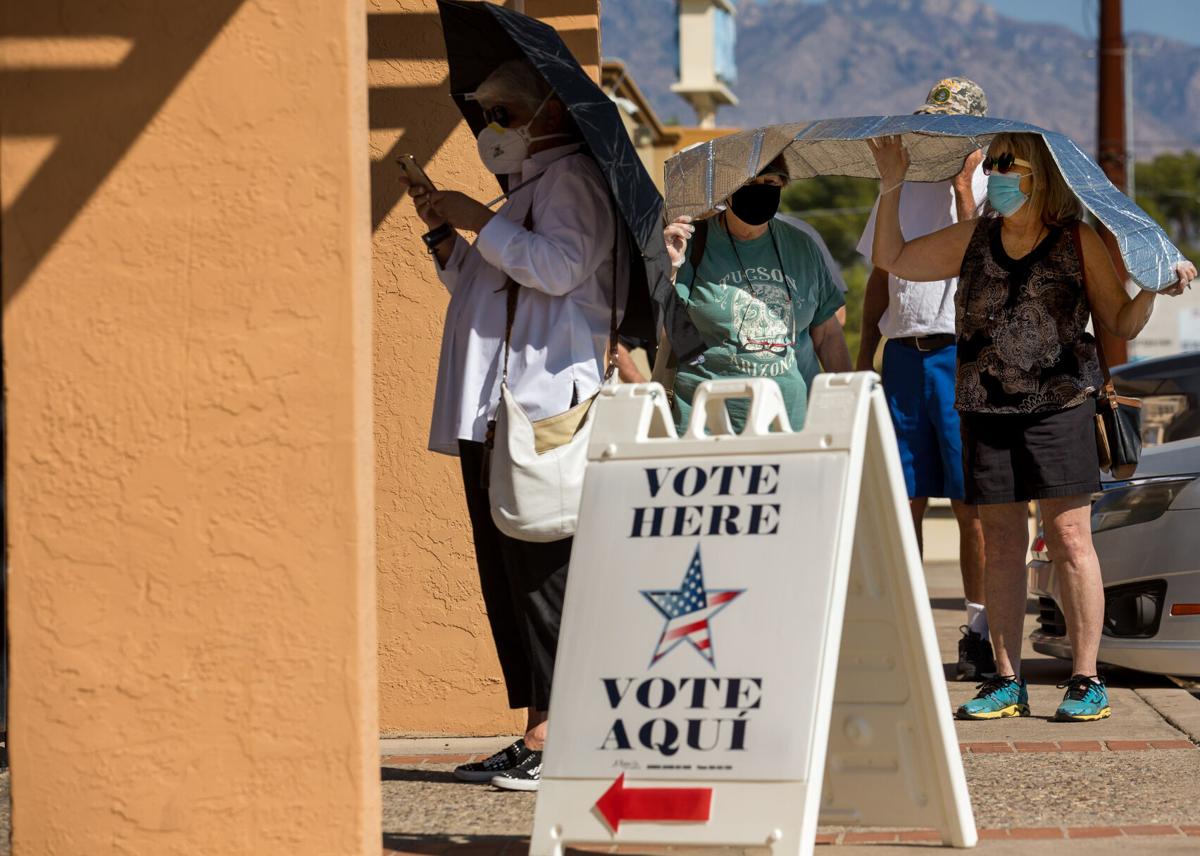Pima County is getting an update to the way it conducts elections after the Board of Supervisors voted to approve the use of voting centers and electronic poll books, replacing the previous precinct-based, manual voting mechanism.
The board voted on two separate items Tuesday to adopt voting centers and e-poll books, approving both with 4-1 votes with Supervisor Steve Christy dissenting.
Elections department officials plan to create 100 voting centers where any county voter can go to cast a ballot regardless of where they live in the county. The new model replaces the polling places where voters are required to vote at the location assigned to them based on their residence.
The board also approved a contract with TENEX to buy election management software that will replace the paper rosters and series of logs and forms used to manually check-in a voter. Now, elections department employees will check voters in on an iPad that will print off a ballot specific to their precinct.
The Pima County Recorder’s office expects to have both vote centers and e-poll books in use by the Aug. 2 primary election. The startup cost for the new system is about $1.2 million, which includes a nearly $700,000 grant from the U.S. Election Assistance Commission. After that, the annual cost is estimated to be about $360,000, according to the recorder’s office.
The board’s decision makes Pima County the last county in Arizona to adopt e-poll books and the 12th county to adopt voting centers. The county’s elections department estimates the change will make election results available sooner and shorten the check-in process for voters from 3 minutes to 30 seconds.
The precinct-based polling system causes many voters to have to vote provisional ballots after showing up at the wrong location. In 2020, 656 votes cast at Pima County’s polling places were disqualified due to voters showing up at the wrong precinct.
Gabriella Cázares-Kelly Pima County recorder
“We’re in a time where people are very concerned about whether or not their votes are counting, and they’re seeing their everyday lives impacted by decisions that have been made at the ballot box about who’s representing them,” Pima County Recorder Gabriella Cázares-Kelly said. “If we can help as many as 656 people from being able to cast their ballot and have it count, we should be doing everything we can to make sure that they participate in our democracy.”
Officials from the Pima County Elections Department and recorder’s office said the new system will save the county over $100,000 from the labor costs associated with processing provisional ballots.
“I do think it’s going to be saving us some funding and money when it comes to looking through provisional ballots. That Pima County won’t be the last county to turn in who we voted for,” Supervisor Adelita Grijalva said. “That is frustrating when you’re looking at the national scope and Arizona sitting there. I think a lot of it has to do with the fact that so much of this is done by hand.”
Connectivity, access
The county’s Elections Integrity Committee voted 5-3 to recommend the board adopt vote centers and e-poll books, but some members raised concerns about access to the voting locations, which will drop to 100 this year as opposed to 240 polling places in 2020.
According to the recorder’s office, the voting centers will be placed near public transportation routes, must be ADA compliant and at least 2,000-square-feet in size.
While the county’s election officials have a preliminary list of potential voting centers, the final locations will go before the board for approval in April. Supervisor Rex Scott asked the officials to submit the final list with a “thoughtful, written analysis about how those locations and the number of locations were determined.”
The committee also questioned the reliability of internet connection to run the e-poll books, and recommended “back-up systems should be in place in case of equipment, Wi-Fi, or electrical failure,” in a letter to the board.
The voting centers will have cradlepoint units, a “robust device,” Cázares-Kelly said, that will connect to the strongest nearby signal. If connectivity fails at a location, the recorder said provisional ballots will be available.
“We are working directly with Verizon to do testing currently, and on election day, they will be boosting our signals so that we maintain the best signal we can,” Cázares-Kelly said. “The technology that we’re using, this is the same technology that the IRS is using. This is already everyday technology that we’re utilizing with this system, and so it is it meets very high standards.”
But Christy expressed concern about the county’s ability to evade technical issues without larger-scale testing of the e-poll books. The recorder’s office pilot tested the technology in the Vail bond election and said it “performed well.”
“No countywide test of this system has been validated to show that Pima County doesn’t have a connection issue,” Christy said. “We’re expecting a huge implementation of a very sophisticated and intense system that’s going to change and transform the way we vote in Pima County. The Vail election is being presented as a successful test by the recorder’s office with 70 votes cast, and the basis of a countywide rollout to a fundamental change to our voting system.”
Board Chair Sharon Bronson first voted against the motion to approve voting centers and later switched her vote when the item was reconsidered. The supervisor suggested a lack of experience in the recorder’s office, where Cázares-Kelly is serving her second year as the county’s recorder, and expressed concern over staffing issues in the elections department.
“I am in favor of vote centers. … I just wonder whether we’re ready to move in now,” Bronson said.







